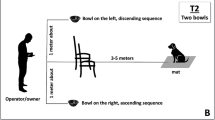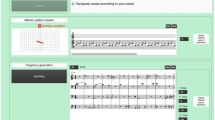Abstract
“There seems to be so much music in your class ... they have a song for everything ... they choose music to listen to ... Those instruments I saw in your science area, did they make them?” These remarks from an observer took me back to the beginning of my teaching and the events that had led to my “musical” preschool classroom.
Similar content being viewed by others
References
Andress, B. (1989). Music for every stage.Music Educators Journal, 76(2), 22–27.
Balkin, A. (1985). The creative music classroom: Laboratory for creativity in life.Music Educators Journal, 71(5), 43–46.
Feeney, S., & Moravcik, E. (1987). A thing of beauty: Aesthetic development in young children.Young Children, 42(6), 7–15.
Fowler, C. (1989). The arts are essential to education.Educational Leadership, 47(8), 60–63.
Hitz, R. (1987). Creative problem solving through musical activities.Young Children, 42(2), 12117.
Howle, M.J. (1989). Twinkle, twinkle little star: It's more than just a nursery song.Children Today, 18(4), 18–22.
Jalongo, M.R., & Collins, M. (1985). Singing with young children! Folk singing for nonmusicians.Young Children, 40(2), 17–21.
Juan, S. (1985). The Yoji Gakuen — The Suzuki philosophy in the preschool.Childhood Education, 62(1), 38–39.
Karnowski, L. (1986). How young writers communicate.Educational Leadership, 44(3), 58–60.
Kenney, S. (1989). Music centers — Freedom to explore.Music Educators Journal, 76(2), 82–36.
Kleszynski, K., & Whiren, A. (1982). A bibliography of music for young audiences.Childhood Education, 59(2), 120–122.
Ludowise, K.D. (1985). Movement to music — Ten activities that foster creativity.Childhood Education, 62(1), 38–39.
Poest, C., Williams, J., Witt, D., & Atwood, M. (1990). Challenge me to move: Large muscle development in young children.Young Children, 45(5), 4–10.
Schiller, P., & Townsend, J. (1985). Early childhood: Science all day long: An integrated approach.Science and Children, 23(2), 34–36.
Scott, C. R. (1989). How children grow musically.Music Educators Journal, 76(2), 28–31.
Smardo, F. A. (1984). Using children's literature as a prelude or finale to music experiences with young children. Reading Teacher, 37(8), 700–705.
Additional information
Laurie Nicholson Stamp is with the Department of Professional Studies in Education Indiana University of Pennsylvania, Indiana, PA.
Rights and permissions
About this article
Cite this article
Stamp, L.N. Music time? All the time!. Early Childhood Educ J 19, 4–6 (1992). https://doi.org/10.1007/BF01617468
Issue Date:
DOI: https://doi.org/10.1007/BF01617468




